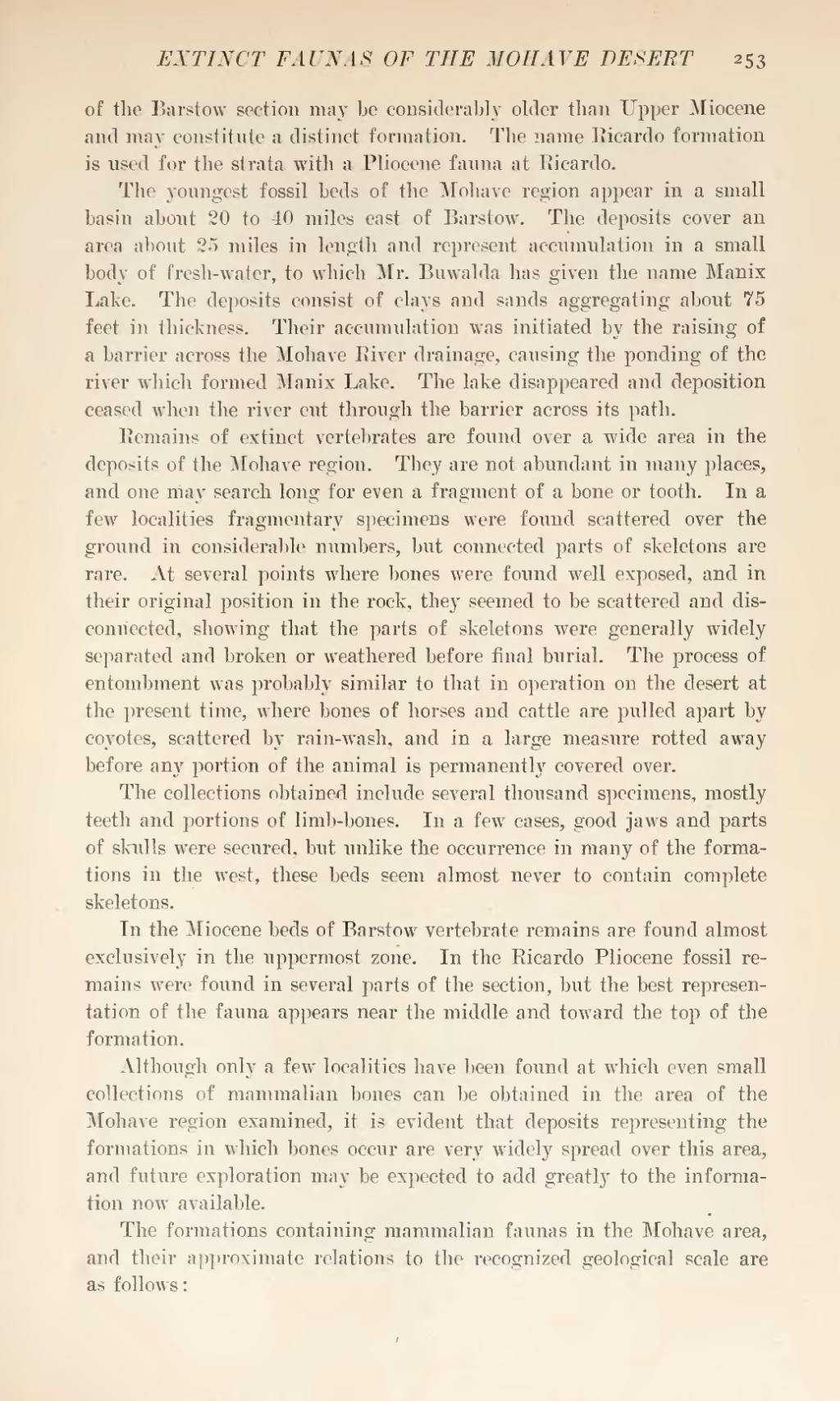of the Barstow section may be considerably older than Upper Miocene and may constitute a distinct formation. The name Ricardo formation is used for the strata with a Pliocene fauna at Ricardo.
The youngest fossil beds of the Mohave region appear in a small basin about 20 to 40 miles east of Barstow. The deposits cover an area about 35 miles in length and represent accumulation in a small body of fresh-water, to which Mr. Buwalda has given the name Manix Lake. The deposits consist of clays and sands aggregating about 75 feet in thickness. Their accumulation was initiated by the raising of a barrier across the Mohave River drainage, causing the ponding of the river which formed Manix Lake. The lake disappeared and deposition ceased when the river cut through the barrier across its path.
Remains of extinct vertebrates are found over a wide area in the deposits of the Mohave region. They are not abundant in many places, and one may search long for even a fragment of a bone or tooth. In a few localities fragmentary specimens were found scattered over the ground in considerable numbers, but connected parts of skeletons are rare. At several points where bones were found well exposed, and in their original position in the rock, they seemed to be scattered and disconnected, showing that the parts of skeletons were generally widely separated and broken or weathered before final burial. The process of entombment was probably similar to that in operation on the desert at the present time, where bones of horses and cattle are pulled apart by coyotes, scattered by rain-wash, and in a large measure rotted away before any portion of the animal is permanently covered over.
The collections obtained include several thousand specimens, mostly teeth and portions of limb-bones. In a few cases, good jaws and parts of skulls were secured, but unlike the occurrence in many of the formations in the west, these beds seem almost never to contain complete skeletons.
In the Miocene beds of Barstow vertebrate remains are found almost exclusively in the uppermost zone. In the Ricardo Pliocene fossil remains were found in several parts of the section, but the best representation of the fauna appears near the middle and toward the top of the formation.
Although only a few localities have been found at which even small collections of mammalian bones can be obtained in the area of the Mohave region examined, it is evident that deposits representing the formations in which bones occur are very widely spread over this area, and future exploration may be expected to add greatly to the information now available.
The formations containing mammalian faunas in the Mohave area, and their approximate relations to the recognized geological scale are as follows:

